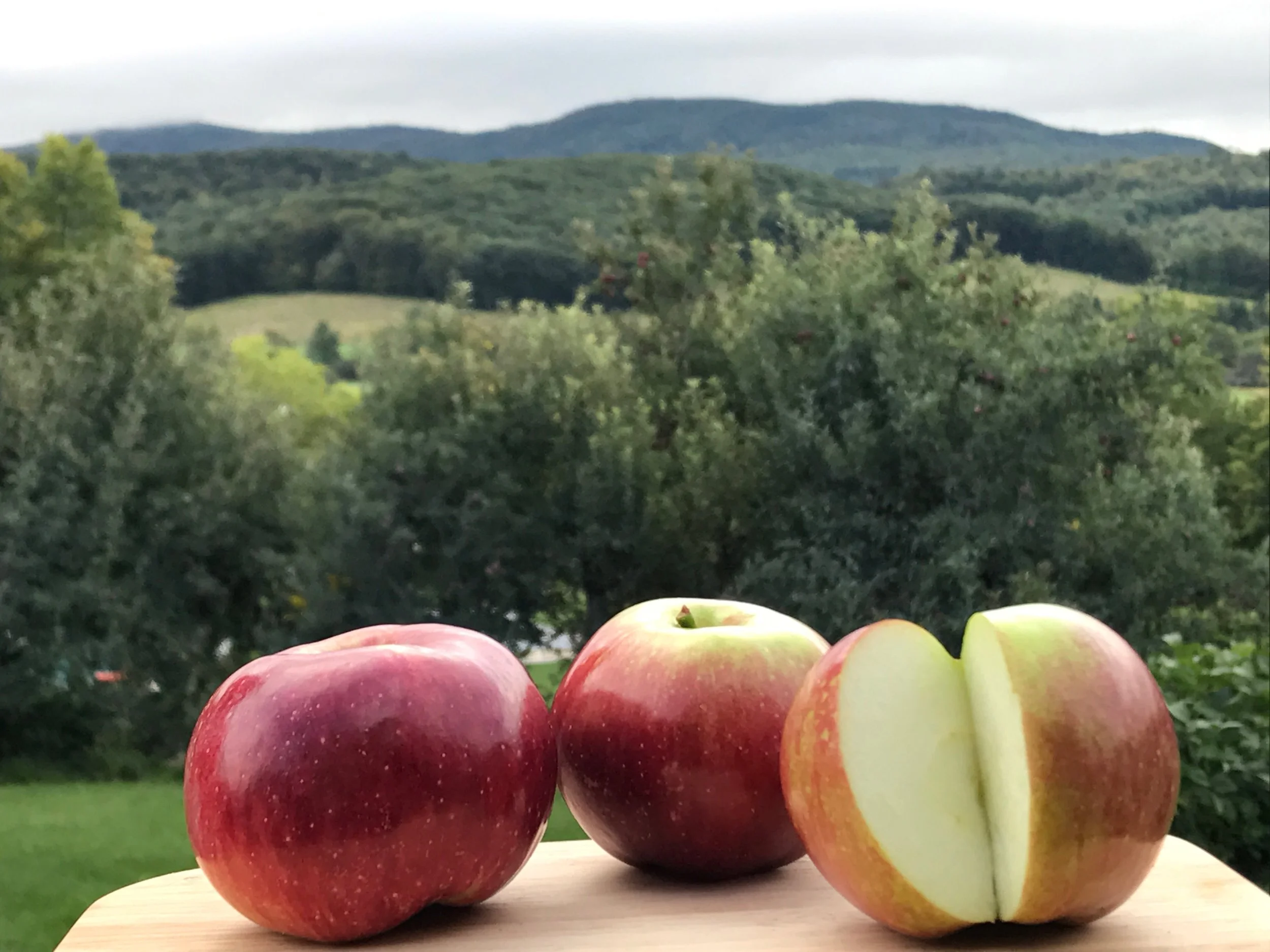How we grow Organic Apples
Early in the spring, usually at end of March, we bundle up and climb our trees with pruners and saw in hand. It is time to trim all of the sprouts that have grown up in the trees for the past year. Damaged branches are trimmed and we have a keen eye on promoting air circulation and trimming out branch density.
Insect
As soon as the beautiful apple blossom petals drop, insects are ready to attack the tiny little apples. While petals are falling we are preparing to spray clay for the first time in the season. The clay (kaolin) is the same substance potters use, in powdered form. Certified organic “Surround”, is mixed with water and sprayed on the trees and our tiny apple crop. The clay coats the leaves and apples leaving a white powder that the insects hate. We reapply the spray many times during the growing season.
This system of insect control has worked really well for us.
So if we don’t have insect problems…
What’s that spot on my apple!
Apple scab is prevalent in the Northeast and is a problem for all apple growers, and is caused by a common fungus in the environment (Venturia inaequalis). Many of the newer apple varieties are “scab resistant” but we are growing heirloom varieties. Most are not naturally resistant to apple scab but we think they are worth the occasional spots. Apple scab does not affect the flavor of the apple or change the inside of the apple. It is strictly cosmetic and doesn’t hurt you if you eat it.
This doesn’t mean we don’t fight the battle with maximum effort.
Scab infects the tree in early spring when the tree flowers and leafs out. The fight begins the previous fall. We clean up under the trees and collect all of the leaves. In the spring we spray organic sulfur, which changes the PH on the leaves and makes it uninhabitable for the fungus. We also use a certified organic fungicide, “Serenade”. Serenade is a harmless bacteria (Bacillus subtilis) that triggers the trees to fight the fungus – kind of an immune booster for the tree.
Rainy springs make things a little more difficult. Most organic controls wear off easily and the sulfur, clay and serenade have to be reapplied each time there is significant rain.
We want you to know we take this battle seriously and put every effort into producing the best fruit possible, but even with the efforts, spots happen. We think the tradeoff of having delicious heirloom apples and not using conventional pesticides and fungicides that could harm our beneficial insects, animals and humans is worth it!
Save the Bees – Eat an Apple with Spots


